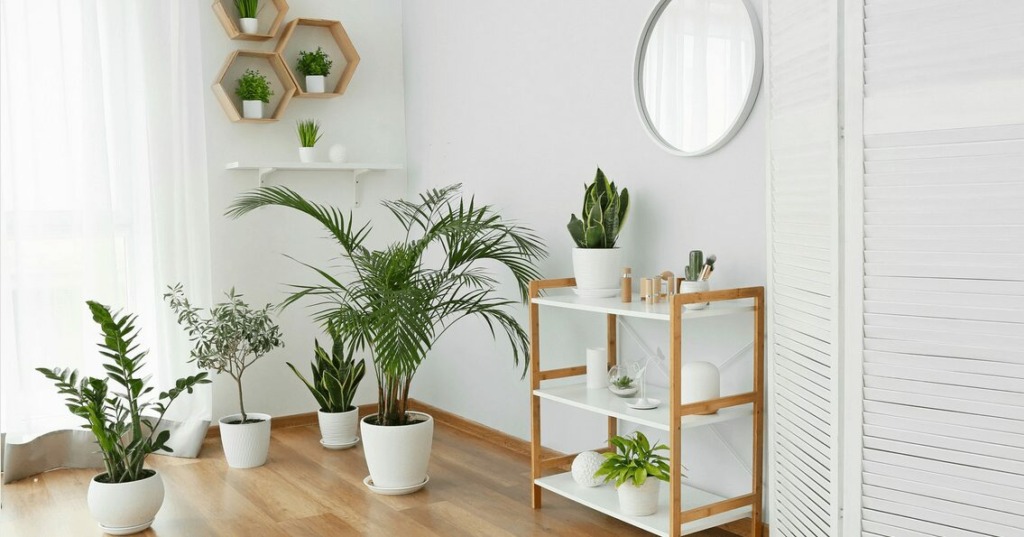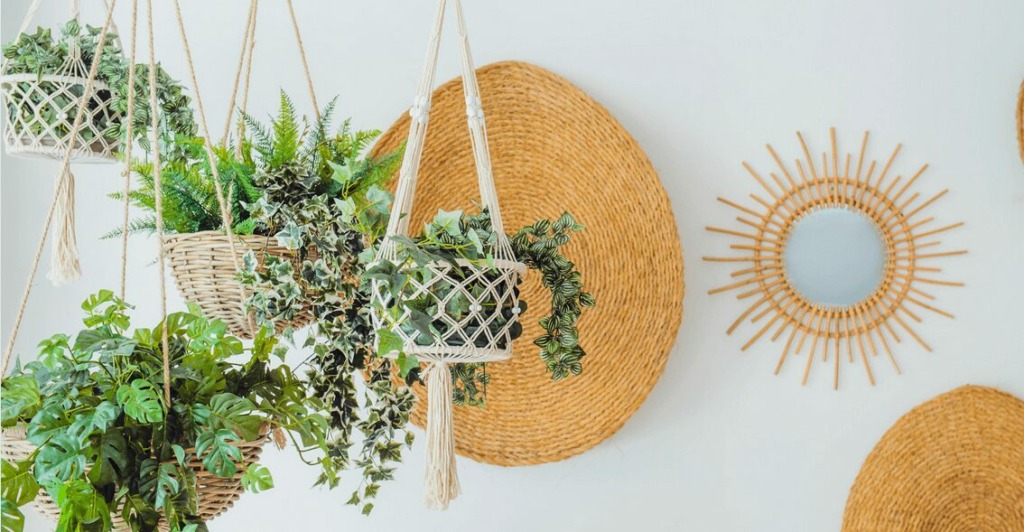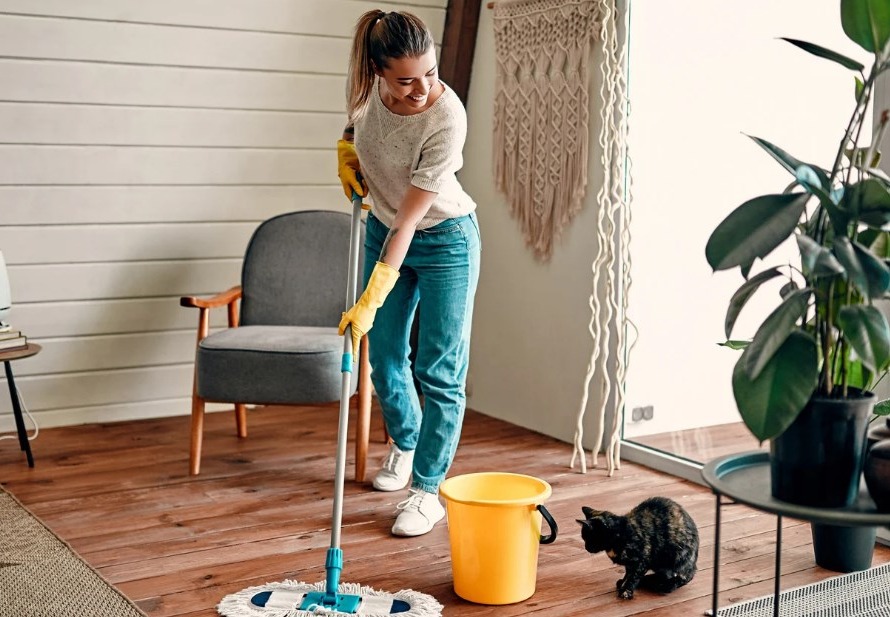Indoor plants are more than just decorative elements; they significantly enhance health and well-being. Incorporating plants can offer numerous benefits for anyone looking to improve their living environment. Indoor plants add aesthetic appeal, making any living space feel more inviting and lively, and contribute to stress reduction and improved mental health. In this blog, we will discuss the importance of indoor plants, highlight their various benefits, and provide practical tips on choosing and caring for plants in your living spaces. Whether you’re a seasoned plant owner or a novice, this guide will help you make the most of your indoor greenery.
Choosing the Right Plants: Factors to Consider
When selecting indoor plants for your living space, it’s essential to consider various factors to ensure they thrive and complement your lifestyle. Here are some key aspects to keep in mind:
Light Availability
Different plants have varying light requirements, so assess the amount of natural light in your home before choosing.
- Low Light Plants: Ideal for rooms with minimal natural light. Examples include snake plants and pothos.
- Medium Light Plants: These plants do well in bright, indirect light. Consider options like spider plants and peace lilies.
- Bright Light Plants: These are perfect for areas with abundant sunlight. Succulents and fiddle-leaf figs are excellent choices for bright conditions.
Space Constraints
The size of the plant should match the space available in your home.
- Small Plants: Best for desks, shelves, and small tables. Examples include cacti and small succulents.
- Medium Plants: Suitable for larger tables or floor placement in open areas. Choose plants like rubber trees and Boston ferns.
- Large Plants: These are ideal for filling empty corners or making a statement. Monstera and fiddle-leaf figs are popular large plant options.
Maintenance Level
Your commitment to plant care is crucial in choosing the suitable indoor greenery.
- Low-Maintenance Plants: These require minimal care, making them perfect for beginners or those with a busy lifestyle. ZZ plants and snake plants are renowned for their hardiness.
- Medium-Maintenance Plants: These plants need regular watering and occasional attention and are suitable for those willing to invest a moderate amount of time in plant care. Examples include spider plants, which require periodic trimming, and peace lilies, which need consistent moisture to thrive.
- High-Maintenance Plants: These are for the dedicated plant enthusiasts who enjoy a routine of care and attention. High-maintenance plants like orchids and bonsai trees can be advantageous but demand consistent monitoring, appropriate moisture levels, and specific lighting conditions.
Popular Plants

Low Light Plants
- Snake Plant: Recognized for its upright, sword-like leaves, the snake plant is highly adaptable and can thrive in low-light conditions. It requires minimal watering and is exceptionally durable, making it a perfect choice for beginners.
- ZZ Plant: Known for its waxy, smooth leaves that reflect sunlight, the ZZ plant is exceptionally sturdy and can tolerate low light and infrequent watering. It’s an excellent plant for those looking for a low-maintenance addition to their home.
- Pothos: This trailing vine with heart-shaped leaves can adapt to various lighting conditions, including low light. Pothos are easy to care for and can grow quickly, adding lush greenery to any room.
Medium Light Plants
- Spider Plant: This plant thrives in bright, indirect light and features long, arching leaves that often produce small “baby” plants. It’s easy to care for, making it a popular choice.
- Peace Lily: Known for its striking white flowers and dark green foliage, the peace lily prefers medium, indirect light. It requires consistent moisture and occasional trimming, but its beauty and air-purifying qualities make it worth the effort.
- Dracaena: With its tall, slender form and striking foliage, Dracaena plants do well in medium light. They require regular watering and occasional misting to maintain humidity, making them suitable for someone with moderate plant care experience.
Bright Light Plants
- Succulents: These hardy plants come in various shapes and sizes and are perfect for sunny spots. Succulents store water in their leaves, making them low-maintenance and ideal for bright, sunny areas.
- Fiddle Leaf Fig: Known for its large, violin-shaped leaves, the fiddle leaf fig thrives in bright, indirect light. It requires consistent watering and rotating to ensure even growth, making it a favourite among plant enthusiasts.
- Rubber Plant: With broad, glossy leaves, rubber plants thrive in bright light but can also tolerate some shade. They need regular watering and occasional wiping of their leaves to keep them looking their best.
Setting Up Your Indoor Plants
Selecting Plant Pots and Containers
Choosing the suitable pots and containers is crucial for your plants’ health and aesthetic appeal. Here’s what to consider when selecting plant pots:
Types of Pots
- Plastic Pots: Lightweight, affordable, and available in various colours and sizes. They retain moisture longer, making them suitable for plants that prefer consistently damp soil.
- Ceramic Pots: These pots are heavier and come in glazed or unglazed varieties. Glazed pots retain moisture better, while unglazed terracotta pots are porous and allow for better air circulation.
- Terracotta Pots: Known for their natural, earthy look, terracotta pots are porous, promoting airflow and preventing root rot. However, they dry out faster, requiring more frequent watering.
Choosing Pots with Drainage Holes
Selecting pots with drainage holes is essential to prevent overwatering, which can lead to root rot. If your pot doesn’t have drainage holes, consider using a plastic liner with holes or placing a layer of stones at the bottom to improve drainage.
Soil and Potting Mixes
A suitable soil or potting mix is fundamental for healthy plant growth. Different plants have varying soil needs, so choosing the appropriate mix is essential.
Importance of Using the Right Potting Mix
The right potting mix provides necessary nutrients, ensures proper drainage, and promotes healthy root development.
- General-Purpose Potting Mix: This mix is suitable for various indoor plants. It typically contains a balance of organic materials, peat moss, and perlite, providing good drainage and moisture retention.
- Specialized Mixes: Certain plants require specialized mixes to thrive. For example, cacti and succulents need a well-draining, sandy mix, while orchids prefer a chunky, bark-based mix that mimics their natural growing conditions.
Positioning Your Plants
Finding the best spots for your plants involves understanding their light requirements and creatively using your available space.
Tips for Finding the Best Spots Based on Light Requirements
- Low Light Plants: Depending on the plant, these may be placed in areas with minimal natural light, such as bathrooms or hallways.
- Medium Light Plants: Ideal for bright, indirect light spots, like rooms with north or east-facing windows.
- Bright Light Plants: Position these near south or west-facing windows where they can receive ample sunlight.
Using Plant Stands, Shelves, and Hangers to Optimize Space
- Plant Stands: Elevate plants to different heights, creating visual interest and optimizing light exposure.
- Shelves: Plants on shelves can efficiently utilize vertical space, especially in small rooms or spaces.
- Hangers: Hang plants from the ceiling or wall brackets to save floor space and create a cascading green effect.
By carefully selecting pots, using suitable potting mixes, and positioning your plants effectively, you can create a thriving indoor garden that enhances your living environment.
Dealing with Common Plant Problems
Pest Control
Indoor plants can sometimes fall victim to various pests, affecting their health and appearance if not addressed promptly. Here are some common indoor plant pests and how to manage them:
- Aphids: Small, soft-bodied insects that cluster on new growth and can cause leaves to curl and yellow.
- Spider Mites: Tiny, spider-like pests that suck sap from leaves, causing stippling or bronzing of the foliage.
- Mealybugs: White, cottony insects that often appear on leaf joints and can weaken plants by sucking their sap.
Natural Solutions
- Insecticidal Soap: Safe for most plants, insecticidal soap can be effective against aphids, spider mites, and mealybugs. Simply spray the affected areas thoroughly.
- Neem Oil: A natural pesticide, neem oil disrupts pests’ life cycles and can be sprayed on plants every couple of weeks as a preventative measure.
Chemical Solutions
- Systemic Insecticides: Applied to the soil and taken up by the plant, these can provide longer-lasting protection against pests.
- Contact Insecticides: Sprayed directly onto pests, these provide immediate results but may require repeated applications.
Disease Prevention
Keeping indoor plants healthy also involves preventing and managing diseases arising from improper care or environmental conditions.
Recognizing Signs of Plant Diseases
- Root Rot: Caused by overwatering or poor drainage, root rot presents as black, mushy roots and yellowing leaves.
- Mildew: Powdery mildew appears as a white, powdery substance on leaves, while downy mildew appears as yellow spots on the tops of leaves with a corresponding fuzzy growth underneath.
Tips for Preventing and Treating Common Issues
- Proper Watering: Ensure plants are watered appropriately for their species, avoid overwatering, and ensure pots have adequate drainage to prevent root rot.
- Air Circulation: Promote good air circulation around plants to reduce humidity and prevent fungal infections like mildew.
- Sanitation: To reduce the chances of disease, regularly clean plant leaves and remove dead or decaying plant material. Sterilize pruning tools between uses to prevent the spreading of pathogens.
- Fungicides: For issues like mildew, applying a fungicide can help treat and prevent further spread. Always follow the instructions for safe and effective use.
Creative Ways to Incorporate Plants into Your Space

Using Vertical Space
Incorporating plants into vertical spaces is an excellent way to optimize your living area while adding a lush, green aesthetic.
Hanging Planters and Wall-Mounted Shelves
- Hanging Planters: Utilize ceiling hooks or wall brackets to suspend plants, allowing them to cascade down and create a dynamic display. This method saves floor space and can be particularly striking in smaller areas.
- Wall-Mounted Shelves: Install shelves on your walls to display various potted plants. Arranging plants at different heights adds visual interest and efficiently uses vertical space.
DIY Plant Walls and Trellises
- Plant Walls: Mount planters or use vertical garden systems to create a living wall. This can be a statement feature in any room and is perfect for growing herbs, succulents, or even small tropical plants.
- Trellises: Install trellises on walls or within planters to support climbing plants like ivy or philodendron. This adds a touch of nature to your interior and can be a beautiful, ever-changing art piece.
Tips for Integrating Plants into Decor
Integrating plants into your room’s decor can enhance the overall aesthetic and create a cohesive, inviting space.
Grouping Plants for Visual Impact
Arrange plants of various sizes and shapes together to create an eye-catching display. Grouping plants with similar care needs simplifies maintenance and accentuates their beauty.
Using Plants as Room Dividers
Large plants or strategically placed plant stands can serve as natural room dividers, providing privacy and defining different zones within an open-plan space.
Styling Plants with Decorative Pots and Stands
Choose decorative pots and stylish plant stands to complement your interior design. Mixing terracotta, ceramic, and metal can add texture and sophistication to your plant displays.
Portable Plant Solutions
Consider solutions that allow you to move and rearrange your plants for a versatile and adaptable indoor garden. Wheeled plant stands will enable you to move plants around your home, ensuring they receive optimal light and making cleaning more convenient.
Conclusion
The journey of creating and maintaining an indoor plant haven can be exciting. We first highlighted the importance of choosing the right plants that suit your space and environment. Selecting plants that thrive indoors and align with your lifestyle ensures a successful start. Set up your indoor garden with effective potting solutions, strategic placement, and vertical spaces to maximize functionality and aesthetic appeal.
Caring for your indoor plants involves regular attention to watering, ensuring proper air circulation, and being vigilant about pests and diseases. Employing natural and chemical solutions for pest control and following best disease prevention practices can significantly enhance your plants’ health and longevity.
Incorporating plants into your living space offers visual and emotional benefits, creating a calming, green sanctuary within your home. Caring for your indoor plants is rewarding whether you’re a seasoned gardener or a novice. Embrace the process and enjoy the benefits of nurturing a vibrant indoor oasis.
Start your Yellowknife journey with us. With Rent In Yellowknife, you can experience the magic of the North from the comfort of your new home. Contact us today to find your perfect space!



